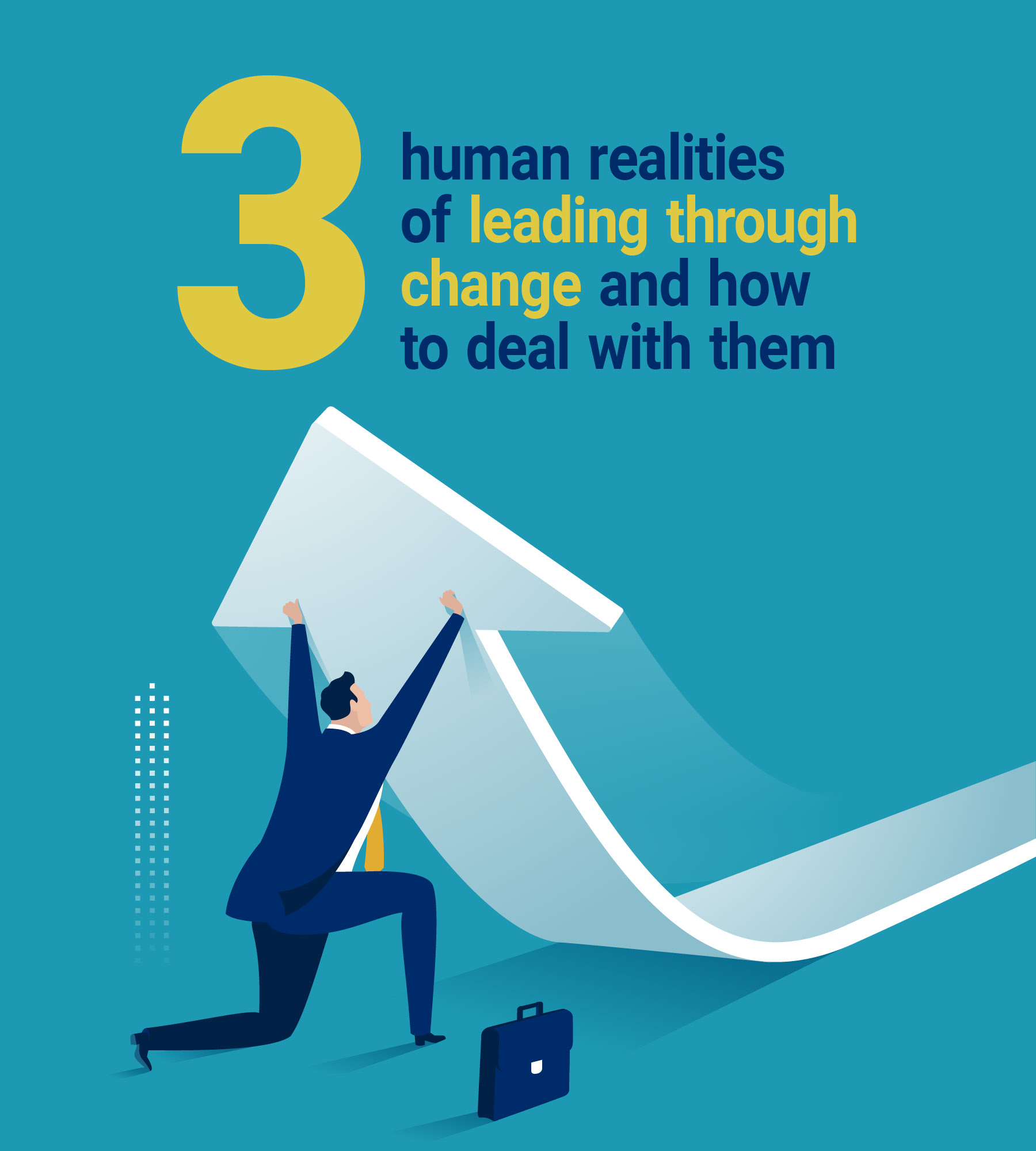Language
You can read the magazine in one of the following languages
Now, more than ever, the human element of change must be a constant, front-of-mind obsession and focus of attention on any change journey. Change is never easy, but it can be made easier by having the right mindset and adopting the right approach to engage people to address these three human realities.

I’ve learned over the years to stop myself from thinking something new is stupid until I take the time to really understand it. I’ve been wrong too often to fall for that trap anymore.
The ‘disrupters’ in retail started with nothing, so it’s fair to identify the source of failure of the traditional players, with all their advantages, as due to being trapped in the thinking that created past success. In 2024, Amazon enjoys a market capitalization of US$2 trillion, dwarfing traditional retailers Walmart and Costco (and IBM, for that matter).
Past success and knowledge can be potential killers because it makes it harder to adopt new ideas, beliefs and new ways of working.
For example, in 1999, IBM’s Chairman Louis V Gerstner Jr massively underestimated how Amazon might transform retail and internet sales. He described Amazon.com as a “very interesting retail concept” but boasted that IBM was “already generating more revenue, and certainly more profit, than all of the top internet companies combined”.
Past success and knowledge can be potential killers because it makes it harder to adopt new ideas, beliefs and new ways of working. The more things change, the less what we know matters, and our ability to learn becomes most important. As Bill Gates said, “Success is a lousy teacher.”

Another way of defusing the hierarchy is to provide examples to your team of where you think you might be going wrong or could have done better, and encourage others to speak up and share their honest opinions with you.
The approach I use to overcome the limiting influence of hierarchy is to get clear with people about the risks we are prepared to take to change or try new things, and overtly express my understanding that mistakes will happen. When they do, it is important to react calmly and make sure the learning is captured and progress is made as a result.
This conditioning and hierarchy are significant influences on how we confront change in the workplace. Together they breed fear and resistance to change and doing new things.
Well over a century of industrialization and hierarchy has encouraged conformist thinking in our work lives.
Baby Boomers and Gen Xers grew up at work with the clear expectation of doing what the boss told us to do. We had to be in control (or look like it), know the answer to the questions we were asked (or quickly avoid the question) and not make mistakes (or hide them well).
Well over a century of industrialization and hierarchy has encouraged conformist thinking in our work lives. We were hired to do what we were told, rather than to challenge the status quo and be free to change things or create a new future.
I’ll never forget an old boss of mine yelling at me, “Steve, don’t think, just do!” when I challenged the rationale for an organizational change he was implementing.

If you genuinely want people to embrace change, they need to feel that you understand and acknowledge their fears, even if some of them can’t be allayed. To allow this to happen, you must create a safe space and encourage people to speak up and share their concerns – then listen to what they say and accept their truth.
When we initiate a change program or respond to change, these fears create resistance and slow progress. For example, fear of hurting someone’s feelings leads us to avoid having difficult conversations and making tough prioritization decisions.
When we initiate a change program or respond to change, these fears create resistance and slow progress.
As a result, we can end up doing too much, losing focus and not doing anything well, or allowing a bad situation to persist.
We have many fears to confront in the face of change, including fear of the unknown, fear of being wrong and fear of making mistakes. Add to that the ever-present fear of hurting someone’s feelings.
Fear is an important and instinctive response to change for good reason. Our survival instinct conditions us to be wary of change until we fully understand the consequences.
These are human realities I’ve had to confront over 40 years of leading and responding to technology and industry change, and how I’ve dealt with them.
While we can’t make change easy, we can make it easier by better acknowledging and addressing the human elements that shape the willingness of people to buy into a change you want to make happen.
Change is hard because we are human and our reaction to it is shaped by a natural survival instinct to protect ourselves from the potential downside impact and risks.
Change is hard because we are human and our reaction to it is shaped by a natural survival instinct to protect ourselves from the potential downsides, impacts and risks. In the face of change, we put protecting our safety and sense of self-worth first.
But change is also the constant and accelerating factor we face in our personal lives and at work. Whether it is making changes to improve customer service or responding to a change imposed unexpectedly like a global pandemic, taking these measured approaches can help all of us to better manage the transitions.

Steve Vamos
Contributor Collective Member
Steve Vamos is an author, speaker and advisor with over 40 years’ experience in the global technology and digital media industries as a CEO and Board Director. He was CEO of Xero from 2018–2023, where he led a team of more than 4,500 people around the world. Previously, Steve served as Managing Director of Microsoft Australia and New Zealand, CEO of ninemsn and Managing Director of Apple Asia-Pacific. He has served as a non-executive director and advisor to a range of Australian organizations, from startups to large established companies. ‘Through Shifts and Shocks’ is Steve’s first book. For more information visit https://www.linkedin.com/in/stevevamos/
